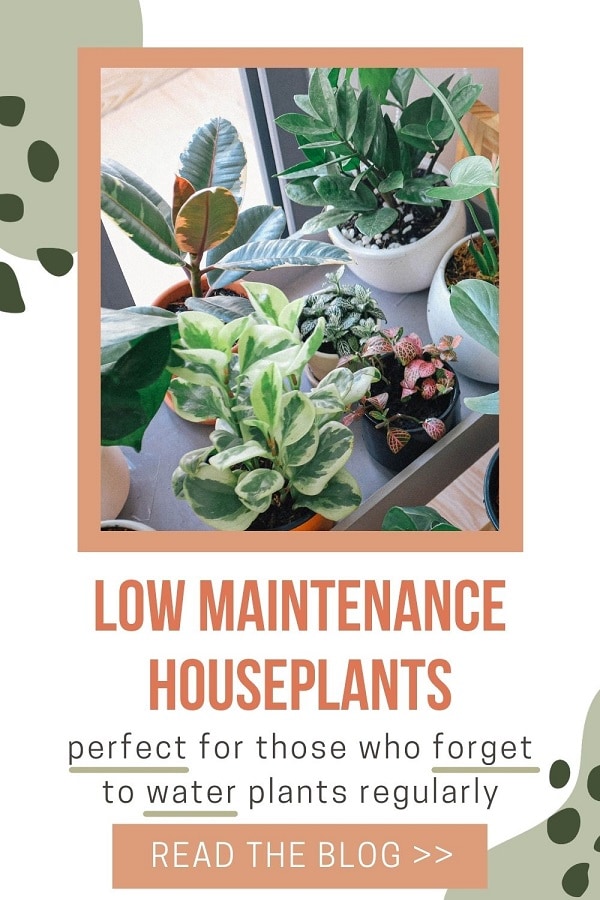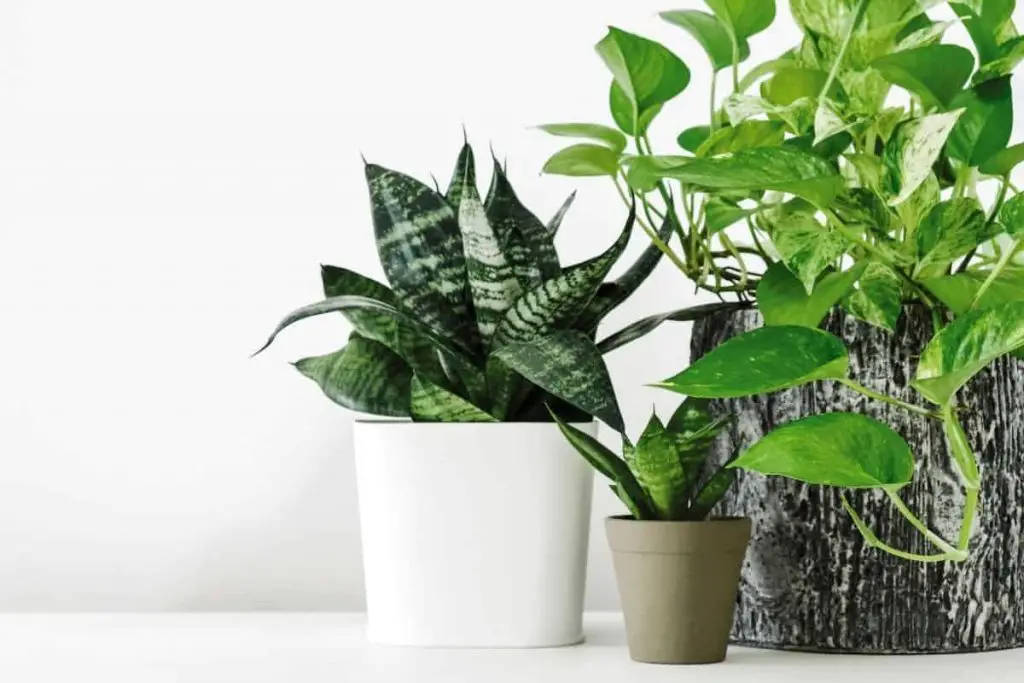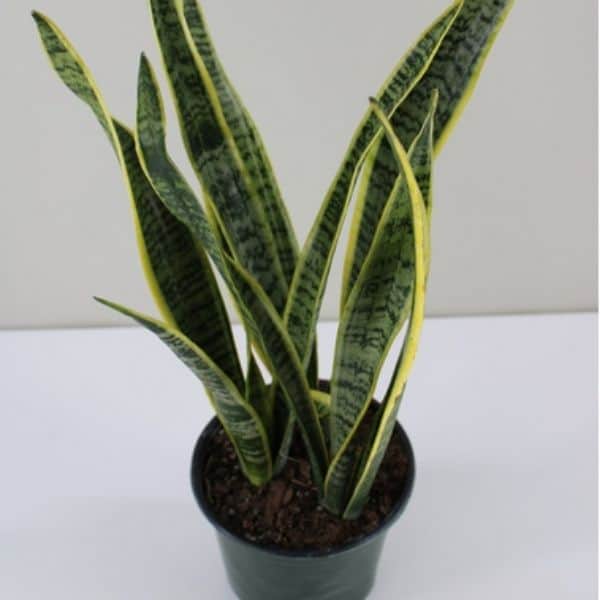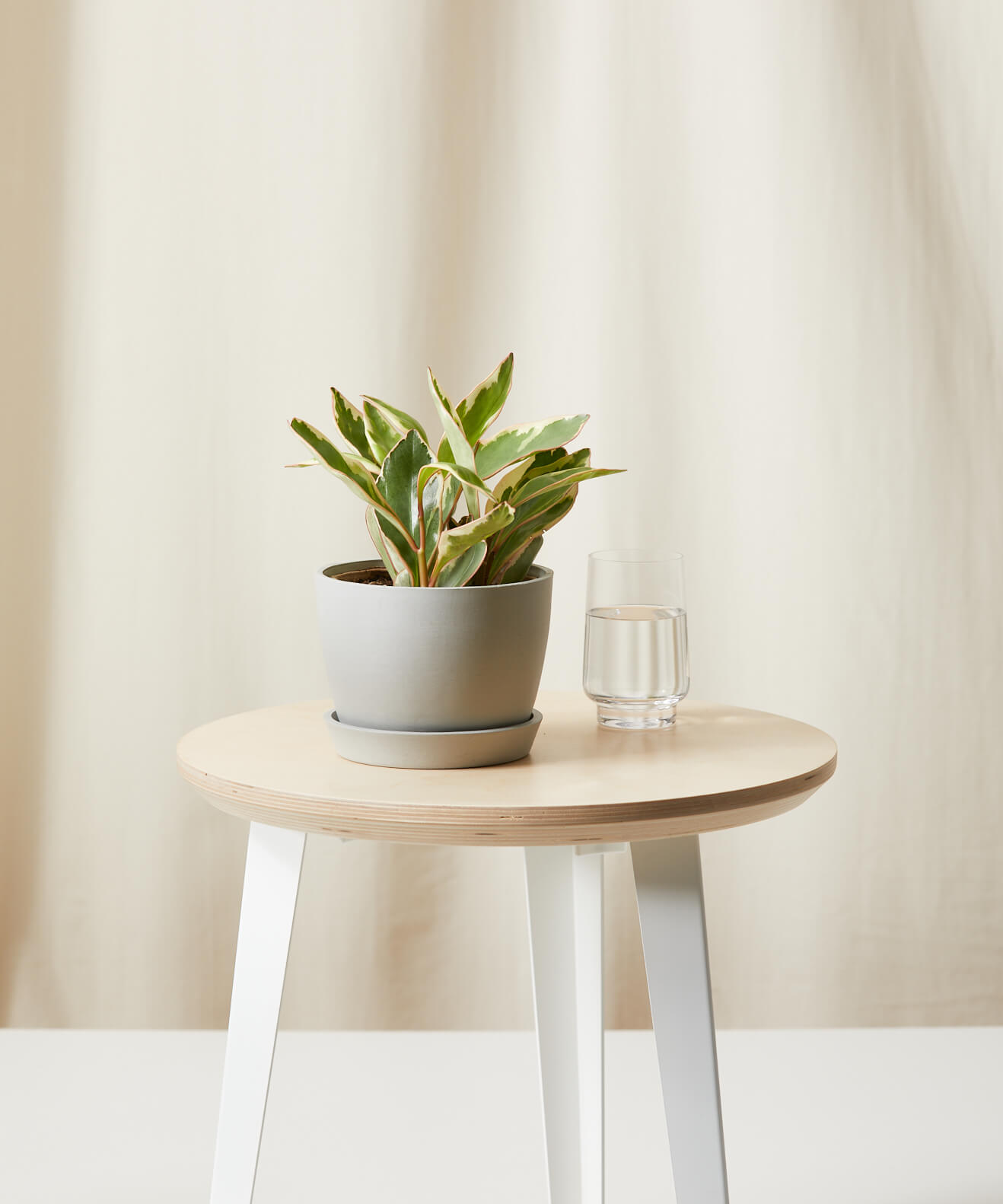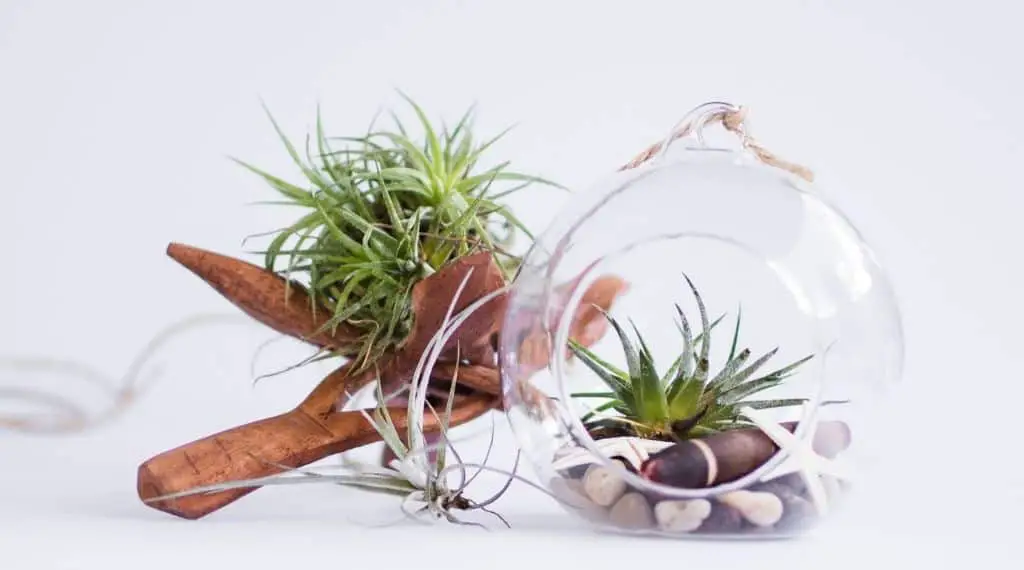Last Updated on October 5, 2021 by Plantiful Interiors
Nothing ties a room together quite like a few well-placed plants. But for those of us born without a green thumb, the idea of plant care can be intimidating.
Fortunately, there are many low maintenance indoor plants perfect for beginners who love the way house plants look, but just can’t seem to keep them alive.
Low maintenance indoor plants are forgiving when it comes to light and watering, and will often bounce back after a week or two of neglect.
This site features affiliate content. As an affiliate partner of various brands, we earn commissions on qualifying purchases, at no extra cost to you. Please read our disclaimer for more information.
Our top low maintenance indoor plants for beginners are:
- Snake Plant
- Pepperomia Ginny
- Aloe Vera
- Philodendron
- Pothos
- Ponytail Palm
- Spider Plant
- Air Plant
- Wax Plant
- Lucky Bamboo
Keep reading for plant care instructions and descriptions that will help you choose which low maintenance indoor plant is best for you.
There are many advantages to having plants in a house or apartment.
Plants are proven to improve mood and clean the air of toxins, in addition to providing exciting accents to your home.
So, if you love the way plants look but are worried you don’t have the time to care for them, or are just someone who simply forgets to water plants regularly, one of these low maintenance indoor plants is bound to be a fit!
Easy-to-Care-for Houseplants
The following plants are perfect for beginners and people who don’t have a lot of time to devote to houseplant care.
These are the plants that you will want in your house and will have for a long time even with giving them little love and attention…just don’t completely forget about them.
01. Snake Plant
Snake plants are perfect for making a statement, and at up to 3 feet tall, a row of these hardy plants can create a unique room divider or a focal point to add interest to a bland room.
Snake plants emit oxygen at night, making it a perfect plant for the bedroom, too.
Things to know:
- Light: Indirect sunlight; does well in north-facing windows
- Water: Let it dry out between watering
- Provide well-draining potting mix and take care not to overwater
- Terracotta pots can help prevent root rot since they don’t retain water
One of the lowest-maintenance plants on the list, snake plants thrive in low light and can bounce back from drought. So, if you travel a lot or have a habit of forgetting to water, this might be the plant for you!
Related Reading: Everything You Need To Know About Snake Plant Care Indoors
02. Peperomia Ginny
Peperomia Ginny plants are a slow growing plant making the need to repot less common. The medium sized leaves take up the majority of it’s size and can either trail over a decorative pot or be held upright with support stick. The faded pink pastel color around the edges of the leaves are what make this plant so eye catching, creating a variegated look.
Known for it’s hardy nature, the peperomia ginny is a great plant for beginners and is tolerable to varying temperature, lighting and humidity. This plant looks stunning in a hallways or living room where guests can envy it’s beauty.
Things to know:
- Light: low to bright indirect sunlight, be sure not to allow the leaves to be hit with direct sun or it will damage the foliage
- Water: water well, but let it dry out between watering
- Use a well-draining potting mix that has peat moss and perlite
Pet owners can rejoice since the pepperomia plant is non toxic to cats and dogs. If your plant’s leaves are drooping try misting the leaves between watering – just be sure damp leaves are not exposed to direct sunlight that could cause burning.

03. Aloe Vera
Aloe Vera can lend a funky Southwestern vibe to your home when grouped with other succulents. They do well in terracotta pots, which tend to have a more traditional look, but cool modern terracotta pots are available for a fun twist.
Known as a topical salve for burns, many choose to keep an aloe plant in the kitchen. Keep in mind, though, that the plant is toxic if ingested.
Things to know:
- Light: bright indirect sunlight, western or southern windows are ideal. Yellowing leaves indicate too much sun.
- Water: water well, but let it dry out between watering, so the first 2 inches of soil are dry
- Use a well-draining potting mix to prevent rot
Overwatering is the most common cause of death for aloe plants, so these guys are a good choice for someone who tends to be more hands-off when it comes to plant care.
04. Philodendron
The philodendron is one of the most popular houseplants, and for good reason. This tropical plant is adaptable and easy to care for, not to mention gorgeous!
There are hundreds of philodendron types, many of which come in unusual shapes and colors, making them great for plant newbies who want to branch out from the norm.
Many types of philodendron do well as houseplants, some of which include:
- Heartleaf: heart-shaped leaves that trail or climb, perfect for hanging baskets
- Red Leaf: dark red leaves; has a tropical vibe
- Prince of Orange: new leaves come in bright orange, then turn to green
- Moonlight: large, bright, almost neon green leaves
Things to know:
- Light: bright, indirect light
- Water: let the top inch of soil dry out between watering
- Fertilizer can be used for faster growth and larger leaf size
With all the varieties of philodendron available, you’re sure to find one that suits your style. From the more traditional-looking heartleaf variety to the more exotic Prince of Orange, there’s a variety to match any decor.
Don’t Forget These Items To Help Keep Your Indoor Plants Alive:
05. Pothos
Pothos is a trailing plant perfect for hanging pots or placed on shelves or ledges that its leaves can cascade over.
Pothos is popular in offices and reception rooms due to its ability to clean the air. Its thick, waxy leaves are often confused with a philodendron’s.
Things to know:
- Light: Prefers bright, indirect light, but can do okay in medium to medium-low light. If the leaves turn yellow, it needs less light, and if they lose their pattern, it needs more.
- Water: Allow the top 2 inches of soil to dry out between watering
Nicknamed “The Devil’s Ivy†because it’s so hard to kill, pothos bounces back from neglect and low light conditions; this makes it ideal for people who have not had good luck with plants in the past.
06. Ponytail Palm
Ponytail palms are another large houseplant (about 3 feet tall) that can help break up a large room.
Things to know:
- Light: bright, indirect light
- Water: water every 2-3 weeks
This drought-resistant succulent stores water in its base, making it perfect for people who travel a lot or are otherwise too busy to water frequently.
07. Spider Plant
Spider plants are one of the most common low maintenance indoor plants.
Give your place a retro vibe with a few spider plants hanging in macrame plant hangers. Known to be excellent at filtering toxins from the air, spider plants are popular in homes and offices.
Things to know:
- Light: prefers bright indirect light, but can thrive in medium to low light
- Water: water about once a week
Because spider plants are so easy to propagate, they’re an excellent choice if you’re on a budget but dream of having lots of plants.
To propagate, wait until the baby spider plants hanging from the mother plant start to grow nubs, then remove them and:
- Stick them in a container of water until they grow roots
- Plant them in soil, either directly from the mother plant or after having rooted them in water
08. Air Plant
Air plants are fascinating because they don’t need soil to grow; this means that you can place them pretty much anywhere, as long as the light, temperature, and humidity are right.
Things to know:
- Light: Bright indirect light, south or east-facing windows work best
- Water: Submerge the entire plant in water every week or two and let air dry completely in bright sun for up to 3 hours
- Humidity: Keep in a humid area (like the bathroom) or mist weekly, not enough to drip
- Only water and mist in the mornings
- Strike a balance between light, heat, and humidity, raising moisture as heat and light increase
Air plants are fun additions to a home and do well hanging or placed in terrariums.
Related Reading: Air Plant Care: Q&A to Grow Vibrant Plants
09. Hoya Plant
Hoya plants, also called wax plants, are thick, tropical vines that look amazing in hanging baskets or trailing down a bookshelf. They can also be trained around a traditional or hoop trellis for added variety.
Things to know:
- Light: bright, indirect light
- Water: don’t water more than once a week in warmer months, and once or twice a month in winter
- Sensitive to overwatering; make sure to use soil with good drainage
- Don’t prune the long tendrils if you want flowers
10. Lucky Bamboo
Lucky bamboo makes a great desktop plant since it takes up so little room. It comes in simple straight form, and is also sometimes braided or trained to spiral, adding some variety.
Things to know:
- Light: Moderate indirect sunlight
- Watering when grown in soil: keep slightly damp, but not drenched, or roots will rot
- When grown in water: keep roots covered in water, change water weekly to prevent algae growth
- Keep away from cold drafts, like vents and windows, in winter
If you have trouble with overwatering, growing lucky bamboo in water is a suitable solution.
Which Low Maintenance Houseplant Will You Try?
As you can see, there’s a plant for everyone, including over-waterers and under-waterers who don’t necessarily have the greenest of thumbs.
You can also find a low-maintenance plant that matches your home’s decor with ease, ranging from classic hanging plants that love light to more exotic tropical ones that do well in dimmer conditions.
Drop a comment below and let us know which of these hard to kill plants you’re going to try.
